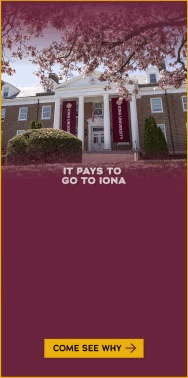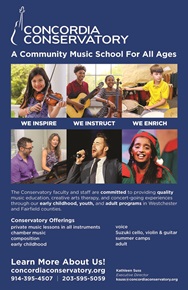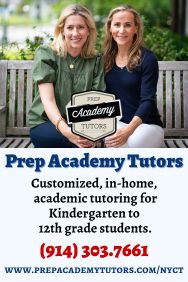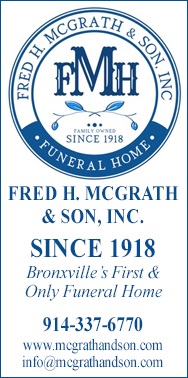Letter to the Community From Leadership of Teacher & Staff Unions

To the Community:
An open letter to the school communities in Westchester, Putnam, Orange and Rockland Counties from the leadership of teacher and staff unions:
We feel compelled to write to you in a shared voice, as there are universal elements to our concerns about re-entry into the schools this September. It is important to note that this is a discussion about re-entry, not reopening. The education of children is, and has always been, our top concern. One truth that cannot be ignored as a necessary precursor to any successful model of instruction is a safe learning space. Though we will open this September for instruction, the only question is the modality of that instruction.
All districts in New York were required to create a re-entry plan that addressed three options: full virtual, hybrid, and full in-person instruction. The hybrid model is the most popular one for re-entry this September, but it poses significant risks. The hybrid model requirement gained traction in the state early on, but unfortunately, most of what we have recently learned about Covid-19 and children calls the safety of this model into question. These risks are not a reflection of inadequate efforts by any one district or administrative team in protecting the children and staff in their schools. Rather, they are inherent inadequacies when a system designed around instructing students is tasked with creating learning environments that will protect children and teachers during a viral pandemic. Additionally, there has been a failure in state and federal governments to ensure that adequate testing, PPE, and HVAC filtration systems are readily available. The requirements for the district plans were provided by the Governor’s office and the State Education Department in the middle of July and they were to be completed by July 31. The Governor even added new testing and contact tracing requirements in the first week of August.
To create truly safe reentry plans districts would require more time, direction, and resources. It is telling that neither the state nor federal governments have provided additional resources to help ensure a safe re-entry. Districts have been on their own.
Educators approach every task with a “can do” attitude. Throughout the months of July and August, teams in each district leaned in and got the job done. The plans were made and it is truly impressive work. The problem, however, is that they are plans to meet government requirements for safety; they are not necessarily plans to make the schools as safe as they can be.
The limits of these plans could be seen close to home this summer when the Greenburgh-North Castle school experienced an outbreak of Covid 19, despite meeting or exceeding all Department of Health guidelines and having a very small student population. As anyone with any experience planning school events can attest, even the best plans on paper never match what happens once actual students are brought in. Every plan assumes a well-behaved student body that will follow all directives and maintain masks and social distancing, even during hall passing. Plans assume we will be able to hire enough leave replacements, substitutes, and monitors to supervise students in the next three weeks. This will not occur. When schools reopen with the potential of being understaffed, it will make an already unsafe situation even worse.
In every survey conducted about reentry, the most important condition people have is that the schools be safe. The phrase “Maslow before Bloom” is never more applicable than the current situation. It is irrational to expect students will be able to learn in any reasonable manner, when their teachers and classrooms are constantly conveying the need for vigilance in mask- wearing and social distancing. The constant need for vigilance cannot help but be internalized as fear and anxiety. At best, schools will be more similar to a well-meaning prison than an actual rich learning environment where thoughts can be shared and joy can be expressed.
Before we can return to schools we must be sure that every reasonable precaution has been met in order for schools to be safe. The goal cannot be to just mitigate risk, but to create the safest possible learning environment. Many of these requirements go well beyond the capability of an individual school district and require action at the state or federal level. We may feel powerless to secure what is necessary; that, however, does not change the reality of its necessity.
To ensure that in-person instruction begins safely, every school district should be putting into place the following measures that create the highest health and safety standards for our students, teachers and staff:
-All building-wide HVAC systems must be upgraded to a minimum of MERV-13 filtration, and if existing systems cannot be upgraded, portable units with HEPA filtration must be available for all indoor spaces.
-There must be uniform standards for COVID testing that help monitor asymptomatic spread. COVID testing must provide accurate and reliable results within 24 hours in order to monitor asymptomatic spread. The current wait time can be as high as 12 days, which is not adequate to help prevent the spread of COVID by asymptomatic individuals infected with COVID in our schools.
-Supply lines for PPE must be prioritized to deliver all necessary PPE to schools in a timely fashion. All schools must have an adequate supply of PPE at all times, including enhanced PPE for students and employees who require it.
-School districts must be able to guarantee that there is sufficient staff to supervise students, and provide instruction, even as individual staff members are absent for illness or quarantine, child-care, or personal leaves.
-There must be a 100% virtual option for teachers and students that are medically compromised.
-Plans should require a minimum 14-day shutdown once closed for Covid 19 issues.
Last year was the most challenging instructional year any teacher experienced. There is no teacher who looks forward to beginning the year using remote instruction. Everything about teaching virtually is more complicated. For educators, their classroom is their space. It is where they conjure children’s dreams and give them the tools to fulfill them. Computers are sterile imposters that rob the experience of the richness of our relationships with our students. Educators and students need to not only feel safe, but must actually be safe in their working and learning environments. Districts need to strive to meet these expectations. There is too much at stake to fall short of the safest possible model.
Additional Resources:
Hybrid Model Risks
www.wired.com/story/hybrid-schooling-is-the-most-dangerous-option-of-all
Testing:
covidstates.net/COVID19%20CONSORTIUM%20REPORT%208%20TEST%20JULY%202020.pdf
HVAC:
www.ashrae.org/file%20library/technical%20resources/covid-19/ashrae-reopening-schools.pdf
New Information on Children and Covid 19
www.lohud.com/story/opinion/2020/08/12/westchester-doctor-school-chronic-illness/3331348001/
www.cnn.com/2020/08/12/health/covid-kids-school-gupta-essay/index.html
Cosigning Presidents
Marcia Heffler Dobbs Ferry United Teachers
Edward Caperna USWOM
Michael Lillis Lakeland Federation of Teachers
Nate Morgan Hastings Teachers Association
Vanessa Vaccaro Ossining Teachers Association
Tom McMahon Mahopac Teachers’ Association
Jennifer Maldonado Hendrick Hudson Education Association
Elisa Rosen Hendrick Hudson Education Association
David Wixted Scarsdale Teachers Association
Anthony Nicodemo Greenburgh North Castle United Teachers
Mary Claire Breslin New Rochelle Federation of United School Employees
Samantha Rosado-Ciriello Yonkers Federation of Teachers
Brenda O’Shea Somers Faculty Association
Andrea McCue Haldane Faculty Association
James Groven Irvington Faculty Association
Judith A. Kelly Teachers’ Association of the Tarrytowns
Chris Tyler Harrison Association of Teachers
Jeanne Whelan Tuckahoe Teachers’ Association
Roseanna Cutietta Hawthorne Cedar Knolls Federation of Teachers
Rick Tivnan Brewster Teachers' Association
Carene Domato Mt. Vernon Federation of Teachers
Melissa Barreto BOCES Teachers’ Association
Jeff Yonkers NYSUT ED 16 Director
Sean Kennedy Yorktown Congress of Teachers
Lisa Jackson Carmel Teachers’ Association
Janet Knight Mamaroneck Teachers’ Association
José Fernandez Peekskill Faculty Association
Amy Geiger Katonah-Lewisboro District Teachers’ Association
Kathleen Fox Edgemont Teachers’ Association
Miriam Longobardi Chappaqua Congress of Teachers
Jennifer Cole Greenburgh Eleven Federation of Teachers
Jim Nolan Mount Pleasant Cottage School Teachers Association
Kara McCormick-Lyons White Plains Teachers’ Association
Alyson Tina Ardsley Congress of Teachers
Ryan Odell Putnam Valley Federation of Teachers
Catherine Armisto United Staff Association (PNW BOCES)
Vincent Kennedy Katonah-Lewisboro Support Staff Association
Jennifer Moore Croton Teachers’ Association
Melinda Merkel Rye Neck Teachers’ Association
Jim Agnello Bronxville Teachers’ Association
Kevin Budzynski Elmsford Teachers Association
Clare Delongchamp Eastchester Teachers’ Association
Vanessa Van Deusen Graham School Federation of Teachers
Brenda Wright Cornwall Teachers' Association
Virginia Campbell Mount Pleasant Teachers Association
Michael Groarke Bedford Teachers’ Association
Sparrow Tobin Board of Directors NYSUT ED14
Laura Beck Orange-Ulster BOCES Teachers Association
Ray Hodges Monroe-Woodbury Teachers Association
Theresa Uhelsky Minisink Valley Teachers Association
Chris White Middletown Teachers Association
Chris Passudetti Pine Bush Teachers Association
Jon Wedvik Clarkstown Teachers Association
Letters Directory
Bronxville is a quaint village (one square mile) located just 16 miles north of midtown Manhattan (roughly 30 minutes on the train) and has a population of approximately 6,500. It is known as a premier community with an excellent public school (K-12) and easy access to Manhattan. Bronxville offers many amenities including an attractive business district, a hospital (Lawrence Hospital), public paddle and tennis courts, fine dining at local restaurants, two private country clubs and a community library.
While the earliest settlers of Bronxville date back to the first half of the 18th century, the history of the modern suburb of Bronxville began in 1890 when William Van Duzer Lawrence purchased a farm and commissioned the architect, William A. Bates, to design a planned community of houses for well-known artists and professionals that became a thriving art colony. This community, now called Lawrence Park, is listed on the National register of Historic Places and many of the homes still have artists’ studios. A neighborhood association within Lawrence Park called “The Hilltop Association” keeps this heritage alive with art shows and other events for neighbors.
Bronxville offers many charming neighborhoods as well as a variety of living options for residents including single family homes, town houses, cooperatives and condominiums. One of the chief benefits of living in “the village” is that your children can attend the Bronxville School.
The Bronxville postal zone (10708, known as “Bronxville PO”) includes the village of Bronxville as well as the Chester Heights section of Eastchester, parts of Tuckahoe and the Lawrence Park West, Cedar Knolls, Armour Villa and Longvale sections of Yonkers. Many of these areas have their own distinct character. For instance, the Armour Villa section has many historic homes and even has its own newsletter called “The Villa Voice” which reports on neighborhood news.
Village of Bronxville Administrative Offices
337-6500
Open 9:00am - 4pm excluding holidays and weekends
Bronxville Police Department
337-0500
Open 24 hours
Bronxville Parking Violations
337-2024
Open 9:00am - 4pm excluding holidays and weekends
Bronxville Fire Deparment
793-6400








